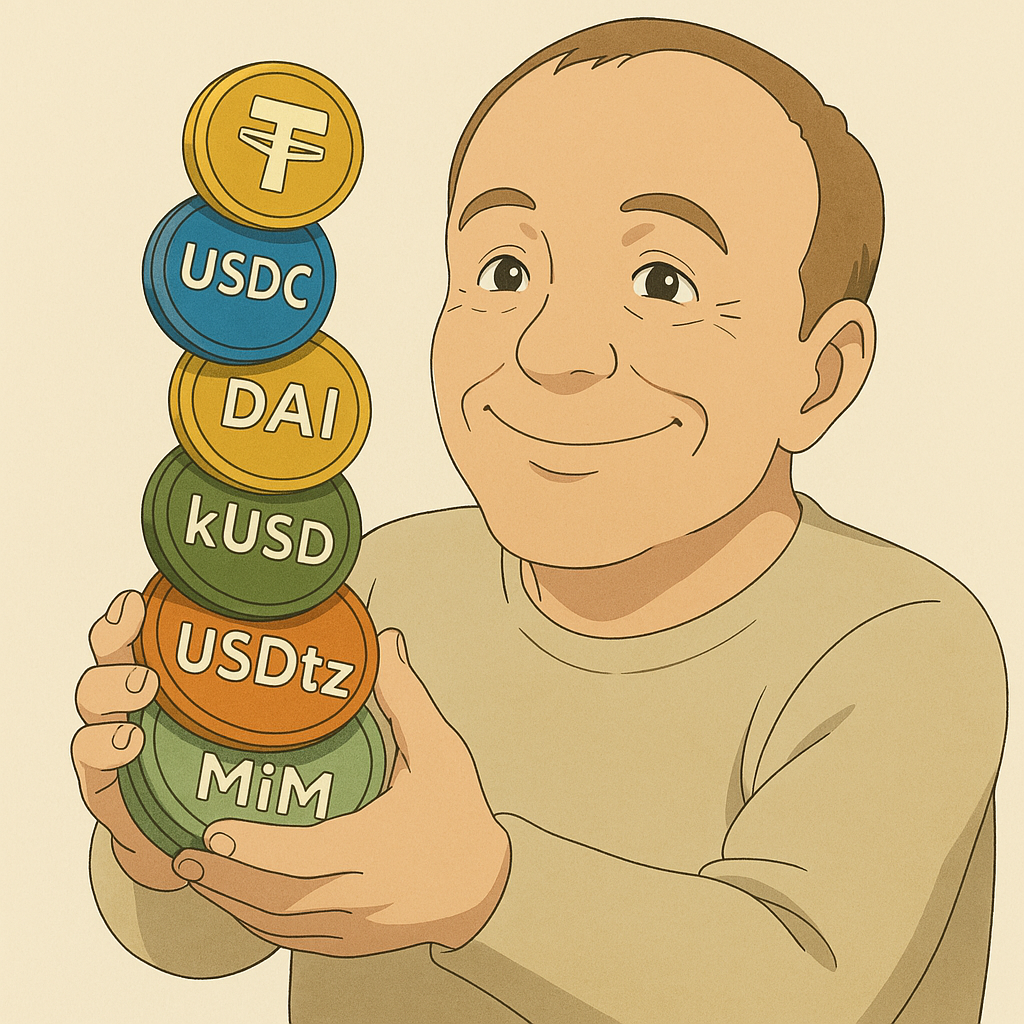DeFi Primer: Stablecoins

In the DeFi Primer blog series, we look at the building blocks of modern DeFi, what they are used for and how do they work. Today we look at stablecoins.
Most cryptocurrencies are very volatile, and it's not always practical to be exposed to the price swings while using DeFi protocols. That's where stablecoins come in. Stablecoins are crypto assets that mimic the price development of fiat currencies, using various mechanisms to achieve this stability.
Fully asset backed stablecoins
The simplest stablecoins are fully backed such as USDC or USDT (Tether). For these stablecoins, one token corresponds to one actual dollar held by Circle or Tether. You can redeem the tokens for the real dollars so when the price of the stablecoin dips bellow one dollar, you can buy and redeem to make profit. This keeps the price of these stablecoins near 1 dollar.
On Tezos, the available fully backed stablecoins are USDT (Tether), a Tezos specific stablecoin USDTz and wrapped or bridged versions of USDC. We'll explain wrapped and bridged tokens below.
Algorithmic stablecoins
There are also algorithmic stablecoins where a complex mechanism helps keep the stablecoin pegged to 1 dollar. The most well known of these stablecoins is DAI (MakerDAO). New DAI is created when users borrow DAI against ETH collateral, and when users repay the loan the DAI is burned. The protocol charges users who borrow (mint DAI) a stability fee that encourages people to burn DAI (and reduce supply) when DAI is below 1 dollar. When DAI is above 1 dollar, lowering the fee can make it more attractive to borrow (mint) DAI and increase supply. There is also a DAI savings rate, where users who deposit their DAI earn interest and a liquidation mechanism to remove bad debt from the system. Together, these mechanisms help the price of DAI stay near 1 dollar.
On Tezos, there is Kolibri (kUSD), which works similarly to DAI.
Wrapped and bridged stablecoins
Chains that don't have stablecoins sometimes bring stablecoins from other chains via bridges. This involves users locking their stablecoins on one chain, and creating a new token on another chain, representing assets on the first chain. So you could lock 1 UDSC on Ethereum in the bridge contract, and get 1 USDC on Tezos, for example to use in a DeFi app on Tezos. Then when you are done, you can bridge your token back on to Ethereum, which burns the USDC on Tezos and unlocks your USDC in the bridge contract on Ethereum.
Bridge contracts hold a lot of funds so they become targets for hackers and in general concentrate risk. It's better to have native versions of stablecoins, but sometimes when a chain is less used or newer, it makes sense to use bridged stablecoins to enable growth.
Conclusion
Wrapping up our look at stablecoins, it's clear they are fundamental building blocks for DeFi activity. They allow users to engage with applications without constant exposure to price fluctuations. Tezos users have access to various options, including native USDT, the Tezos-specific USDTz, the algorithmic kUSD, and bridged versions of popular stablecoins like USDC. While each type, including bridged tokens, has its nuances and risks, their collective presence significantly enhances the usability and potential of the Tezos DeFi ecosystem.

